Design and Implementation of a Walking Stick Aid for Visually Challenged People
Abstract
:1. Introduction
2. Related Works
2.1. Obstacle-Detecting ETAs
2.2. Hybrid ETAs
3. Proposed System
3.1. System Architecture
3.1.1. Control Kernel
Raspberry Pi
PIC Microcontroller
3.1.2. Sensors
Ultrasonic Sensor
Water Level Sensor
3.1.3. Other Components
GPS Module/Global Positioning System
Vibration Motor
Buzzer
Power Supply
3.2. System Implementation and Execution
4. Results
4.1. Obstacle Detection
4.2. Location Information
4.3. Panic Situations
- An emergency SMS and call can be forwarded to emergency contacts that are saved to the APP by shaking the user’s cell phone or pressing the power button four times in 5 s. An SMS can be sent to all emergency contacts, but the call can be forwarded to only one contact, which is saved as the primary emergency contact. The sensitivity of shaking detection can be adjusted according to the user’s requirements. The SMS contains the latitude and longitude of the location, along with the link to Google Maps. Thus, by clicking on this link, it redirects to Google Maps showing the precise location of the user. A demo of call and SMS forwarding in an emergency to primary and other emergency contacts is shown in Figure 9a,b;
- It also captures the location image with a detailed address when shaking the cell phone automatically. After that, it shows options on social media to share a picture with friends or relatives so that the user’s friends or relatives can get a better idea by looking at the image in order to find the exact location of the user in an emergency. This feature can be applicable to partially sighted people. The image sent to friends through social media using this emergency application is shown in Figure 10. The address in Figure 10a,b represents locations near Mr. Brown Coffee, Chang Gung University, and Wenhua 2nd road, Taoyuan city, in front of a cell phone shop, respectively;
- On the first page of the APP, it always displays the real-time location of the user, which is helpful for partially sighted people, and also there is a siren button at the center of the page. In certain emergency conditions, if the user touches this button, a sound is produced informing the surrounding people that the user needs help.
5. Discussion
6. Conclusions
Author Contributions
Funding
Conflicts of Interest
References
- Radhika, R.; Payal, G.P.; Rakshitha, S.; Rampur, S. Smart stick for the blind a complete solution to reach the destination. Int. J. Mod. Treat. Eng. Res. 2016, 3, 659–662. [Google Scholar]
- World Health Organization. Available online: http://www.who.int (accessed on 14 September 2018).
- Koester, D.; Awiszus, M.; Stiefelhagen, R. Mind the gap: Virtual shorelines for blind and partially sighted people. In Proceedings of the IEEE International Conference on Computer Vision Workshops (ICCVW), Venice, Italy, 22–29 October 2017; pp. 1443–1451. [Google Scholar]
- Baldwin, D. Wayfinding technology: A road map to the future. J. Vis. Impair. Blind. 2003, 97, 612–620. [Google Scholar]
- Sharma, P.; Shimi, S.L.; Chatterji, S. Design of microcontroller based virtual eye for the blind. Int. J. Sci. Res. Eng. Technol. 2014, 3, 1137–1142. [Google Scholar]
- Mocanu, B.; Tapu, R.; Zaharia, T. When ultrasonic sensors and computer vision join forces for efficient obstacle detection and recognition. Sensors 2016, 16, 1807. [Google Scholar] [CrossRef] [PubMed]
- Yi, Y.; Dong, L. A design of blind-guide crutch based on multi-sensors. In Proceedings of the IEEE 2015 12th International Conference on Fuzzy Systems and Knowledge Discovery (FSKD), Zhangjiajie, China, 15–17 August 2015; pp. 2288–2292. [Google Scholar]
- Therib, M.A. Smart blinding stick with holes, obstacles and ponds detector based on microcontroller. J. Babylon Univ. Eng. Sci. 2017, 25, 1759–1768. [Google Scholar]
- Saaid, M.F.; Ismail, I.; Noor, M.Z.H. Radio frequency identification walking stick (RFIWS): A device for the blind. In Proceedings of the IEEE 5th International Colloquium on Signal Processing & Its Applications, Kuala Lumpur, Malaysia, 6–8 March 2009; pp. 250–253. [Google Scholar]
- Elmannai, W.; Elleithy, K. Sensor-based assistive devices for visually impaired people: Current status, challenges, and future directions. Sensors 2017, 17, 565. [Google Scholar] [CrossRef] [PubMed]
- Dhod, R.; Singh, G.; Singh, G.; Kaur, M. Low cost GPS and GSM based navigational aid for visually impaired people. In Wireless Personal Communications; Springer: New York, NY, USA, 2017; Volume 92, pp. 1575–1589. [Google Scholar]
- Bharambe, S.; Thakker, R.; Patil, H.; Bhurchandi, K.M. Substitute Eyes for Blind with Navigator Using Android. In Proceedings of the India Educators Conference (TIIEC), Bangalore, India, 4–6 April 2013; pp. 38–43. [Google Scholar]
- Sangami, A.; Kavithra, M.; Rubina, K.; Sivaprakasam, S. Obstacle detection and location finding for blind people. Int. J. Innov. Res. Comput. Commun. Eng. 2015, 3, 119–123. [Google Scholar]
- Swain, K.B.; Patnaik, R.K.; Pal, S.; Raja, R.; Mishra, A.; Dash, C. Arduino based automated stick guide for a visually impaired person. In Proceedings of the 2017 IEEE International Conference on Smart Technologies and Management for Computing, Communication, Controls, Energy and Materials (ICSTM), Chennai, India, 2–4 August 2017; pp. 407–410. [Google Scholar]
- Ramadhan, A.J. Wearable smart system for visually impaired people. Sensors 2018, 18, 843. [Google Scholar] [CrossRef] [PubMed]
- Morad, A.H. GPS talking for blind people. J. Emerg. Technol. Web Intell. 2010, 2, 239–243. [Google Scholar] [CrossRef]
- Kher Chaitrali, S.; Dabhade Yogita, A.; Kadam Snehal, K.; Dhamdhere Swati, D.; Deshpande Aarti, V. An intelligent walking stick for the blind. Int. J. Eng. Res. Gen. Sci. 2015, 3, 1057–1062. [Google Scholar]
- Arduino vs Raspberry Pi vs BeagleBone vs PCDuino. Available online: https://randomnerdtutorials.com/arduino-vs-raspberry-pi-vs-beaglebone-vs-pcduino/ (accessed on 14 December 2018).
- Arduino vs. Raspberry Pi. Available online: https://circuitdigest.com/article/arduino-vs-raspberryp-pi-difference-between-the-two (accessed on 14 December 2018).
- Leccese, F.; Cagnetti, M.; Trinca, D. A smart city application: A fully controlled street lighting isle based on Raspberry-Pi card, a ZigBee sensor network and WiMAX. Sensors 2014, 14, 24408–24424. [Google Scholar] [CrossRef] [PubMed]
- Leccese, F.; Cagnetti, M.; Di Pasquale, S.; Giarnetti, S.; Caciotta, M. A new power quality instrument based on raspberry-pi. Electronics 2016, 5, 64. [Google Scholar] [CrossRef]
- Noriega-Linares, J.E.; Navarro Ruiz, J.M. On the Application of the Raspberry Pi as an Advanced Acoustic Sensor Network for Noise Monitoring. Electronics 2017, 5, 74. [Google Scholar] [CrossRef]
- Leccese, F.; Cagnetti, M.; Calogero, A.; Trinca, D.; di Pasquale, S.; Giarnetti, S.; Cozzella, L. A new acquisition and imaging system for environmental measurements: An experience on the Italian cultural heritage. Sensors 2014, 14, 9290–9312. [Google Scholar] [CrossRef] [PubMed]
- GPS—NMEA Sentence Information. Available online: http://aprs.gids.nl/nmea/ (accessed on 3 October 2018).
- Understanding GPS NMEA Sentences. Available online: http://www.toptechboy.com/arduino/lesson-24-understanding-gps-nmea-sentences/ (accessed on 3 October 2018).
- Shake2Safety—Personal Safety. Available online: https://play.google.com/store/apps/details?id=com.photon.shake2safety&hl=en (accessed on 21 March 2018).


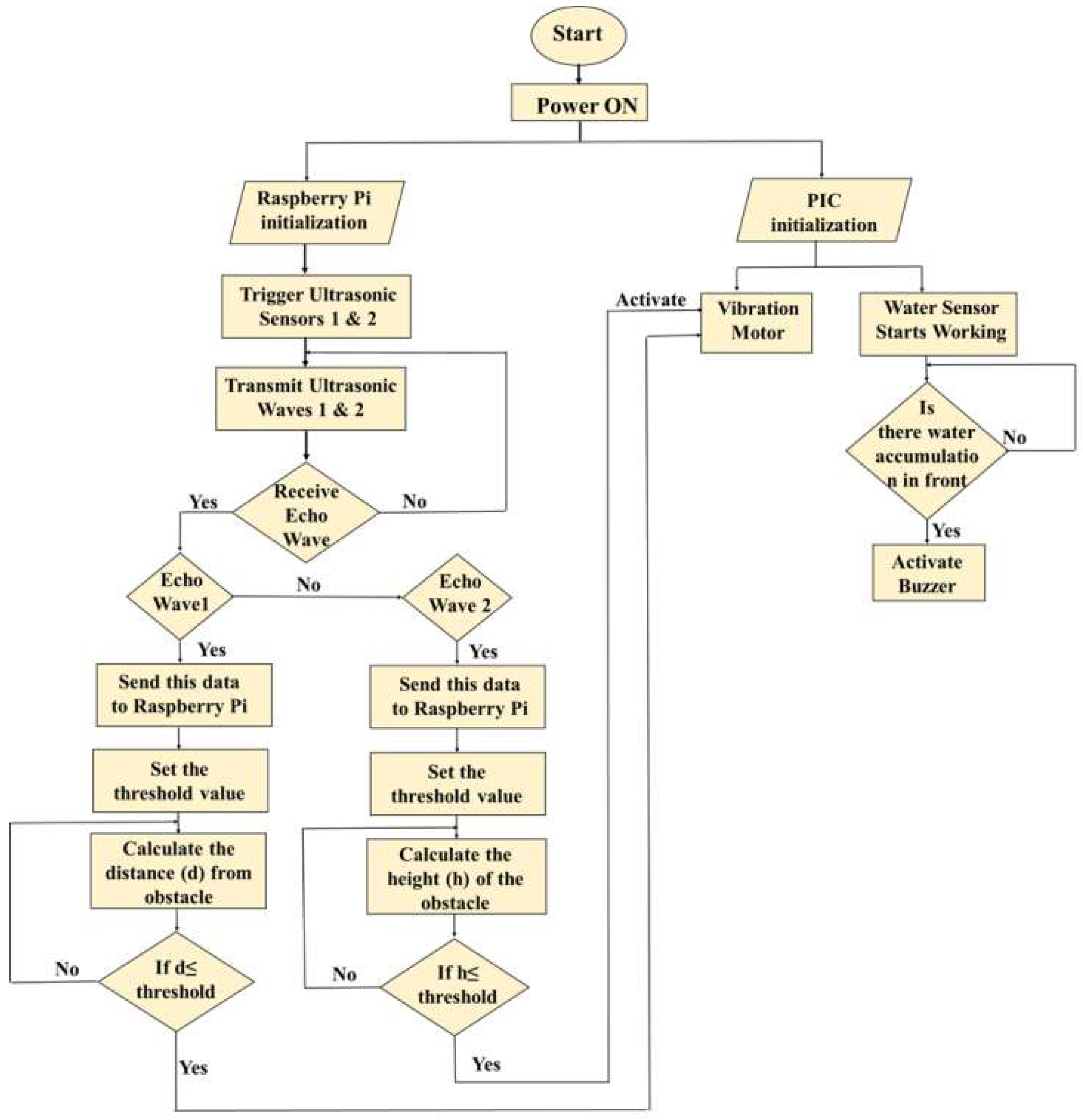

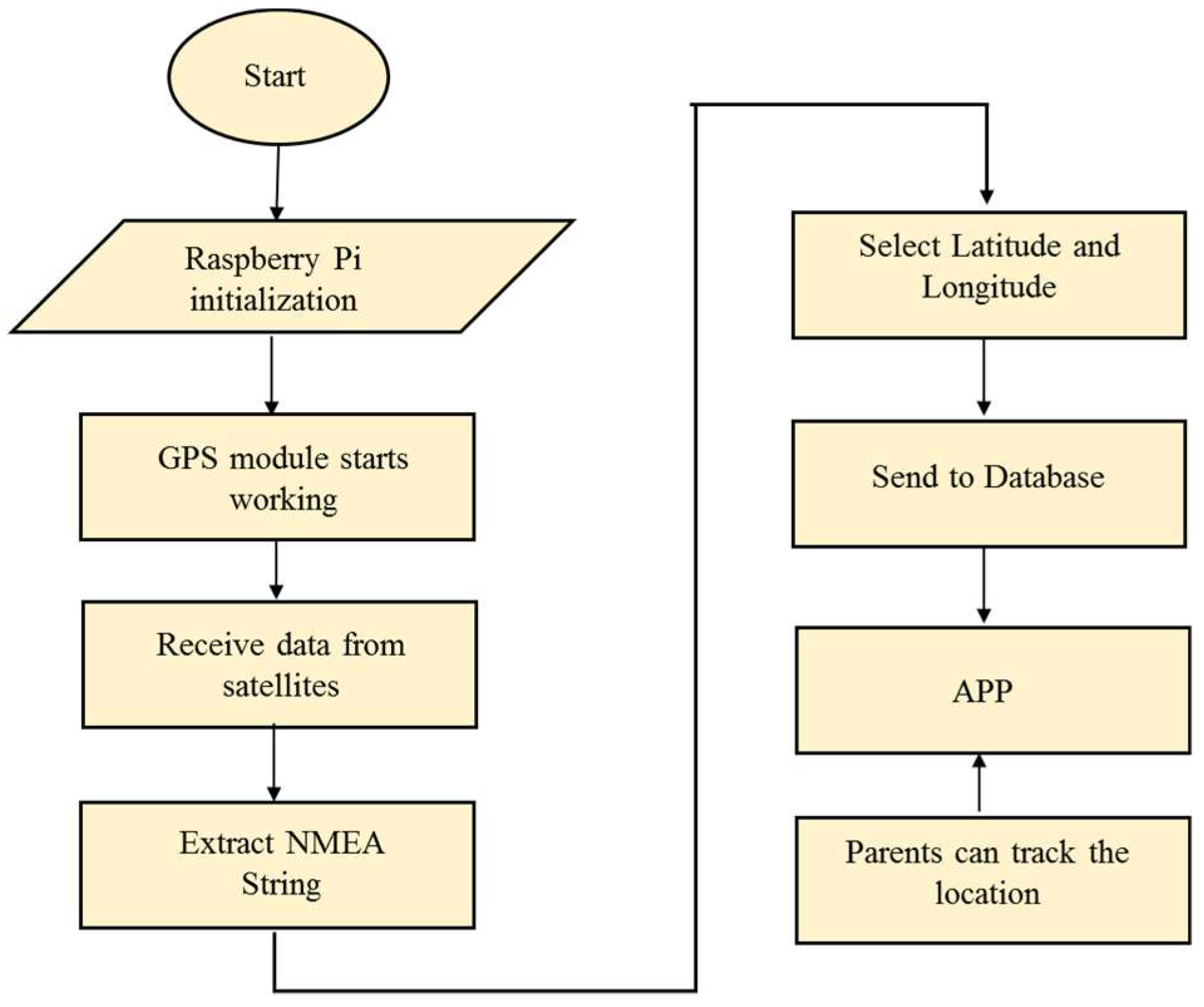

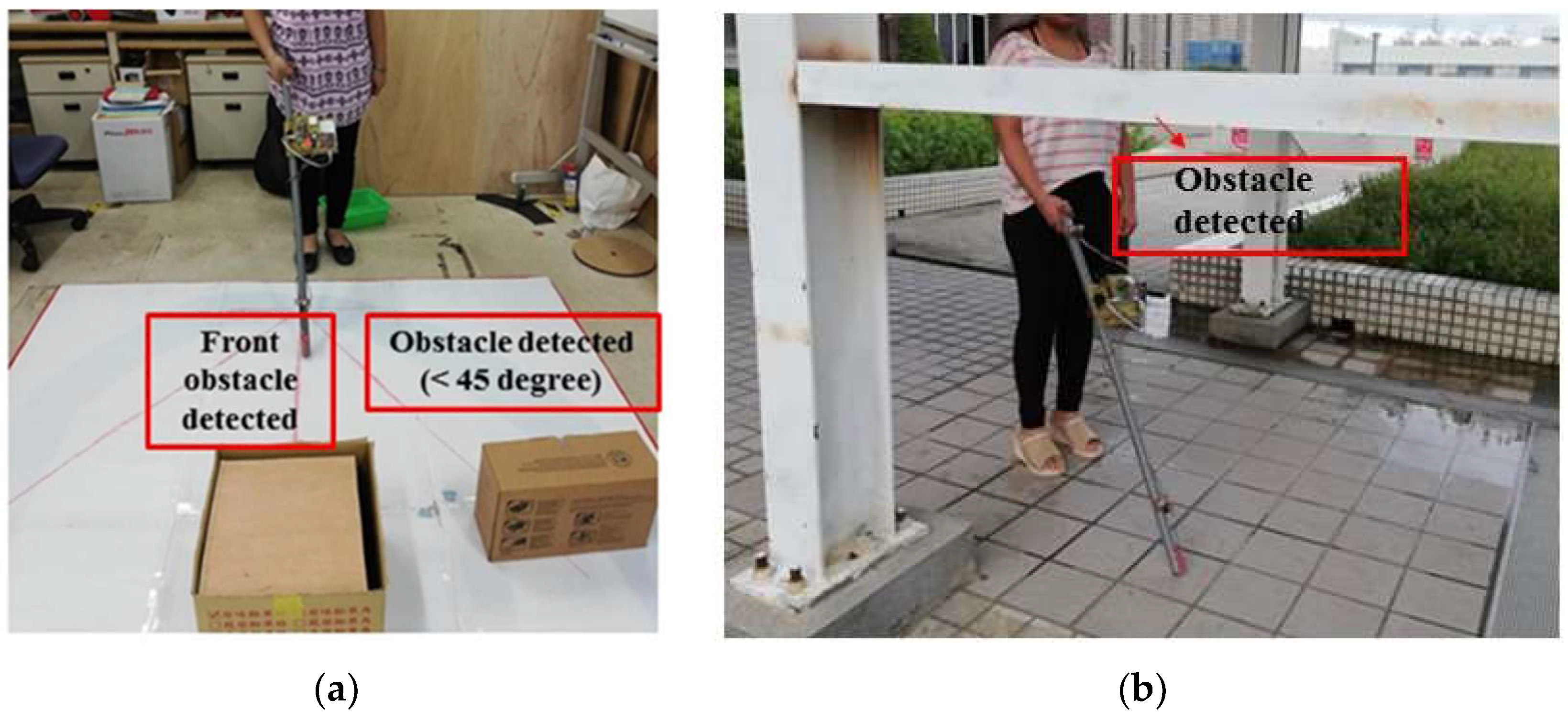

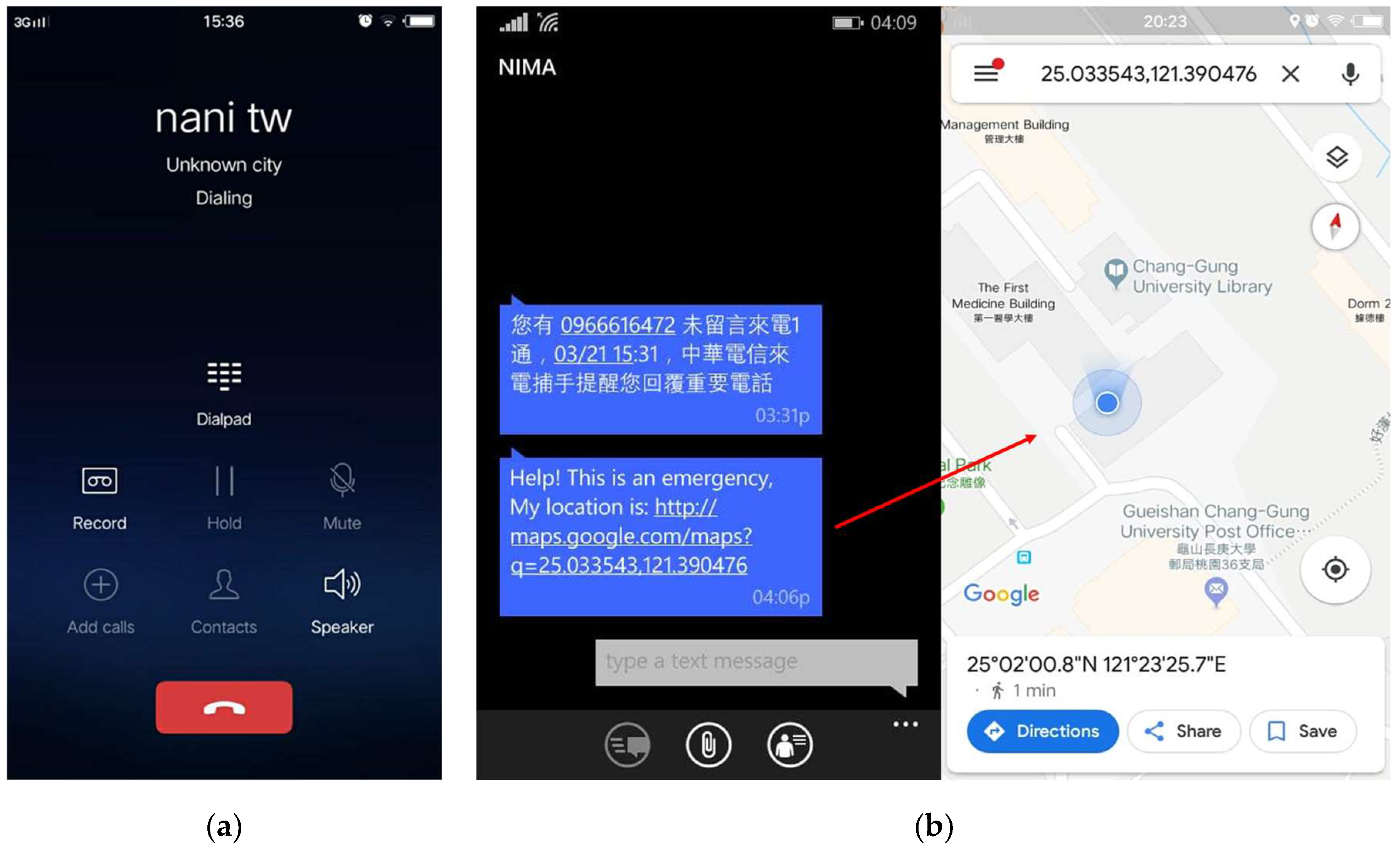
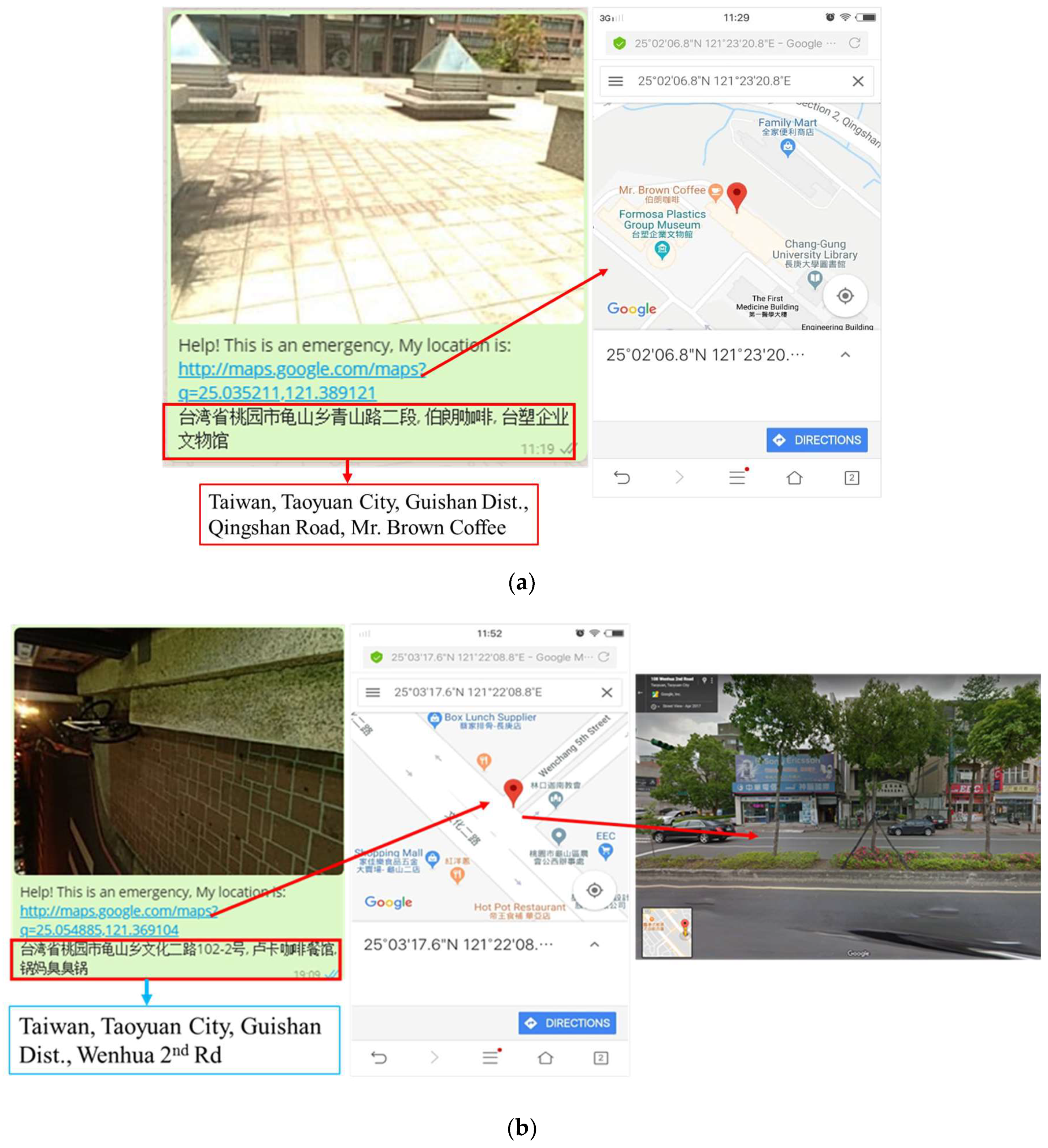
| Points of Comparison | Raspberry Pi | PIC Microcontroller | Arduino |
|---|---|---|---|
| Base Price in US $ | 35 (For this system 10$) | 2~10 | 20 |
| Operating Voltage | 5V | 5V | 5V |
| Power Consumption | ~150 mA | ~20 mA | ~50 mA |
| Operating System | Linux | Custom | Custom |
| Memory | 512 MB RAM, Micro SD Card Slot | 48 KB Flash Memory | 32 KB Flash Memory/2KB SRAM/1KB EEPROM |
| I/O Pins | 40 GPIO Pins (8 Digital, 0 Analog) | 28~44 Pins (For this system 40 Pins, 13 ADC Input channels, 10 bit) | 14 Digital (6 PWM Output), 6 Analog |
| Peripherals | Dual USB connector, 1 Micro USB Power, Video and Audio Output, 1 Ethernet | None | None |
| Internet | Yes | Via shield | Via shield |
| Dimension | 8.6 cm × 5.4 cm × 1.7 cm (For this system 65 mm × 30 mm × 0.2 mm) | Varies according to type (For this system 5 cm × 1.3 cm × 0.7 cm) | Varies according to version (Atmega 328P Arduino, 68.6 mm × 53.3 mm) |
| Better Operation for | Software | Hardware | Hardware |
| Communication Mode | I2C, UART, SPI, 802.11n Wireless LAN, Bluetooth 4.1/BLE | I2C, UART, SPI, PSP | UART, SPI, I2C |
© 2019 by the authors. Licensee MDPI, Basel, Switzerland. This article is an open access article distributed under the terms and conditions of the Creative Commons Attribution (CC BY) license (http://creativecommons.org/licenses/by/4.0/).
Share and Cite
Sahoo, N.; Lin, H.-W.; Chang, Y.-H. Design and Implementation of a Walking Stick Aid for Visually Challenged People. Sensors 2019, 19, 130. https://doi.org/10.3390/s19010130
Sahoo N, Lin H-W, Chang Y-H. Design and Implementation of a Walking Stick Aid for Visually Challenged People. Sensors. 2019; 19(1):130. https://doi.org/10.3390/s19010130
Chicago/Turabian StyleSahoo, Nilima, Hung-Wei Lin, and Yeong-Hwa Chang. 2019. "Design and Implementation of a Walking Stick Aid for Visually Challenged People" Sensors 19, no. 1: 130. https://doi.org/10.3390/s19010130





